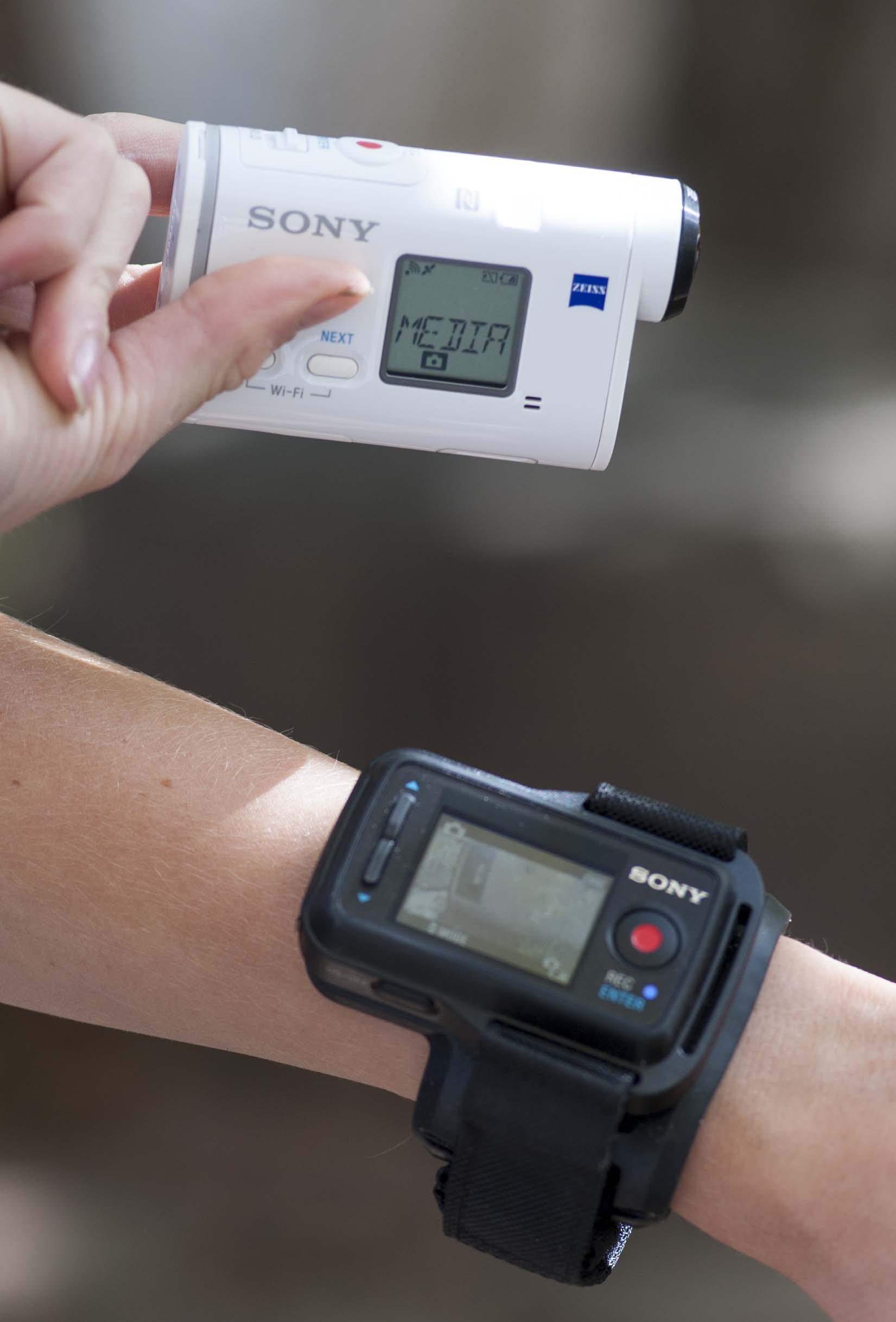
Recently this intrepid National Park Traveler editor had a chance to try out a new action/sports camera: the Sony FDR-X1000V in a rugged field test.
While we have a number of ubiquitous GoPros that we carry with us to produce videos, I was looking forward to putting this new 4K model through its paces. The sandy, hot, dry (and wet) landscape in Canyonlands National Park in southeastern Utah seemed the ideal spot.
I first had a chance to play with this camera last summer at the Outdoor Retailer show in Salt Lake City, and loved the sleek design, and the features. For instance, this is a true 4K video camera, which means it records at 3840 x 2160 pixels; super high resolution, and good enough for the big screen. The lens is a super-wide angle (nearly 180 degrees) all-glass Zeiss; there's no substitute for German glass, and it's sharp!
It also has image stabilization that really works (I was hand holding this camera above my head as we went through the 3 Big Drop rapids in Cataract Canyon), but unfortunately not in 4k mode. One of the nicest features, I think, is the sleek, waterproof housing that let's you control the menu without taking it out of the case. Super important in a wet environment.

Probably the coolest feature, however, is the LiveView remote, which you can wear like a wristwatch, use it to start and stop recording, and you can see exactly what you're getting; important when the camera is mounted a ways away from you. No more just hoping the shot is framed correctly. While I only have one of the cameras, the remote can control up to 5 at one time. And, of course, you can pair it with your smart phone as well. Maybe we can wrangle another couple of these beauties and try that part out.
Of course like any electronics in the wilderness, there's always power angst. Will the battery last through the day, and all of the action? The battery did seem to drain quickly, but came up again with my portable power pack, and even the solar USB charger I carry. I didn't have a second battery, which would have been nice. I did record around 2 hours of 30p/1080 video before I needed more electrons, but it seemed adequate. Perhaps Sony is working on that part.
The stereo microphone has noise-reduction, which worked well on interviews, and even worked once the housing was on: a real plus. It does have a very touchy record button on top, but there is a lock so it doesn't turn on accidentally, though I did a couple of times, and now have video of me looking down at the camera. You will need to have a high-speed U3 micro-SD card, with a write speed of 95mbps, and the more gigabytes the better. You can even record super slow-motion HD video using the 240p setting.
Personally I like the elongated shape of the Sony, over the boxy GoPro (who buy their sensors from Sony according to the rep). It's just easier to hold. It does comes with a bunch of mounting brackets and straps, so you won't be shelling out too much more money for all the bits and pieces, like GoPro seems to do. It also comes with a very nice zippered, water-resistant case.
Since I unpacked and read the instructions as we drove through the desert to our put-in, it was discouraging to not have a full menu in the box; the instructions were very rudimentary. I figured out enough to get it running for our six-day river trip, and finally found the manual online (http://helpguide.sony.net/cam/1520/v1/en/print.pdf) when I got back.
Would I recommend this camera? Short answer, yes. Sony's mirrorless technology seems to be where we're headed, and I actually liked it quite a bit better than the Hero4 GoPro (which became my B Cam on this trip).
One tiny, tiny feature the Sony does have, that the GoPro doesn't have, is so simple: a tripod screw mount on the actual camera, when it was out of the housing. Duh.
The Sony will set you back around $500, but it will do the job. This camera is just easy to use, has superior optics, modes, and features, and minus the manual, touchy on-button, and battery issues, I'm looking forward to using it again out in the wild. 



Add comment